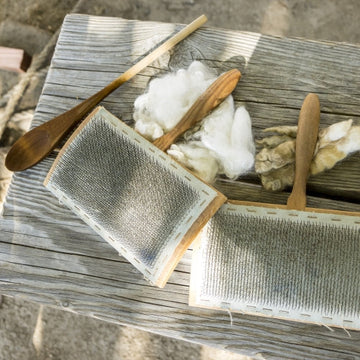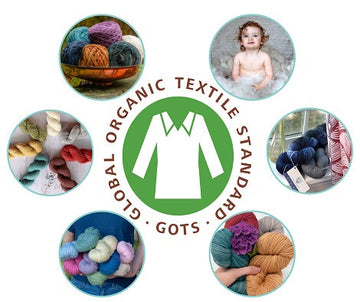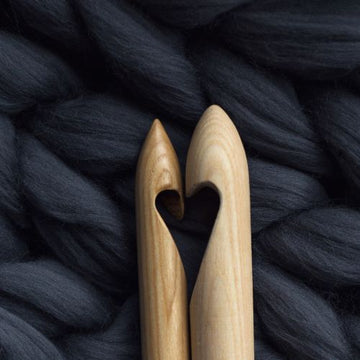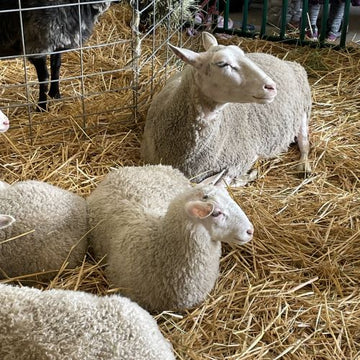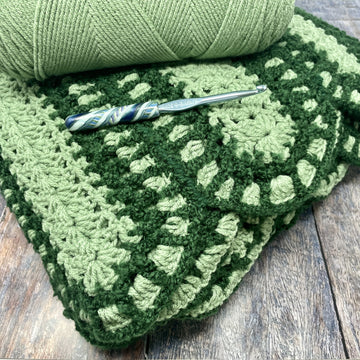An age-old question, and one that many crafters have faced is this: is it better to use natural fiber in our projects? They often come with a heftier price tag than their synthetic counterparts. Both have their uses in the world of fiber arts, but here at Living Dreams, we have a soft spot for natural fibers. Let's explore why.
What are Natural Fibers?
Simply put, natural fibers are those that are derived from plants, animals, or minerals. In the realm of fiber arts, the most common ones we encounter come from animals (like wool and silk) or plants (such as cotton and linen).
Synthetic fibers, on the other hand, are man-made, usually through chemical processes. These include materials like acrylic, nylon, and polyester.

Benefits of Using Natural Fibers
- Comfort: Many natural fibers are known for their incredible comfort. Wool, for instance, has remarkable insulation properties, keeping you warm in winter and surprisingly cool in summer due to its breathability. Cotton is loved for its softness and its ability to wick moisture away from the skin, making it ideal for warmer climates.
- Durability: Natural fibers are often more durable and long-lasting compared to their synthetic counterparts. A well-cared-for wool sweater or a silk scarf can last for decades, becoming treasured heirlooms passed down through generations.
- Environmental Impact: Natural fibers are renewable resources. Sheep regrow their wool, cotton plants can be replanted, and so on. They are also biodegradable, meaning they return to the earth at the end of their life cycle, rather than lingering in landfills for hundreds of years like many synthetic fibers.
- Craftsmanship: Natural fibers lend themselves beautifully to handcrafting. The variations and unique characteristics inherent in natural fibers contribute to the individuality and aesthetic appeal of handcrafted items.
- Sensory Experience: The feel of real wool, the smell of freshly spun cotton, the sheen of silk - natural fibers offer a sensory experience that synthetic fibers often can't match. This pleasure in the process enhances the act of creating, making our craft not just an end product, but a journey.
While it's true that synthetic fibers can sometimes be less expensive and offer easy care instructions, the long-term benefits of natural fibers can often outweigh these conveniences.
A Place For Synthetics in Your Stash?
After the previous list, you might be wondering why someone would be interested in using synthetic fiber after all. Well, it's got some benefits as well!
- Easy Care and Maintenance: One of the most appealing aspects of synthetic fibers is their low-maintenance nature. They are generally machine washable and dryable, resistant to shrinking, and don't require special care instructions. For busy individuals or those less inclined towards meticulous garment care, synthetics offer a practical solution.
- Allergy-Friendly Options: Natural fibers, particularly wool, can sometimes cause allergic reactions or skin irritation for sensitive individuals. Synthetic fibers provide a hypoallergenic alternative, ensuring that everyone can enjoy the warmth and comfort of hand-knitted items without discomfort.
- Cost-Effectiveness: Budget considerations play a significant role in the choice of materials. Synthetic fibers are typically more affordable than their natural counterparts, making them accessible to a broader range of crafters and allowing for larger projects without a substantial financial investment.
Sometimes, a blend of natural and synthetic fibers may offer the best solution, marrying the benefits of both! A great example of this is sock yarn, which typically has a percentage of nylon (or other synthetic fiber) for added strength.
We always encourage an informed and thoughtful approach to choosing fibers, and hope this blog post has given you something to think about. Until next time, happy crafting, and may your choice of fibers bring you joy and satisfaction in your creative journey!


